In rechargeable batteries, one voltage stands out as a ubiquitous standard: 3.7 volts. But why is this voltage so prevalent, and what makes 3.7v batteries so versatile? Among the different types of 3.7V batteries—3.7V Li-ion, 3.7V LiPo, 3.7V 18650, and 3.2V LiFePO4—bring their strengths to the table. Let’s delve into the world of 3.7v batteries to uncover their composition, applications, and how they compare to other popular options in the market.
Part 1. Why are most rechargeable batteries 3.7V?
What is a 3.7V battery?
A 3.7V battery is a type of rechargeable lithium-ion battery that operates at a nominal voltage of 3.7 volts.
The 3.7V rating stems from lithium-ion chemistries. Lithium supplies around 3V during discharge, so pairing it with appropriate cathodes results in a 3.7V operating potential – the maximum safe level supporting stable performance.
What devices use 3.7V batteries?
3.7V batteries are commonly used in various devices, including smartphones, laptops, digital cameras, handheld gaming consoles, and portable power banks.
How long does a 3.7V battery last?
The lifespan of a 3.7V battery varies depending on factors such as usage patterns, charging practices, and environmental conditions. Generally, these batteries can last for hundreds to thousands of charge cycles.
Part 2. 3.7V Li-ion batteries
3.7V lithium-ion batteries use a graphite anode and lithium metal oxide cathode. During charging/discharging, lithium ions shuttle between electrodes while electrons flow externally. Popular 3.7V lithium-ion battery types include lithium cobalt oxide and lithium manganese oxide.
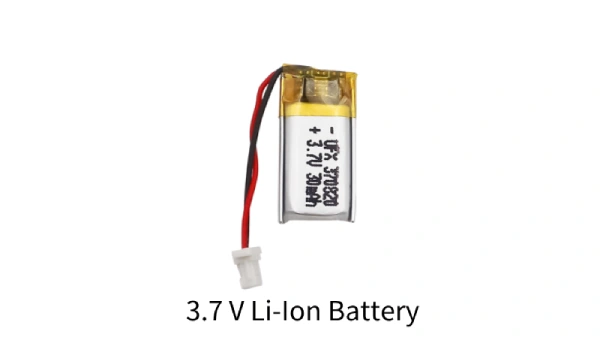
- General: The most common type of rechargeable battery, offering a good balance of energy density, power, and cycle life.
- Chemistry: Uses lithium ions as the charge carriers. Graphite/carbon anode. Lithium metal oxide (LiCoO2, LiMn2OCapable of powering devices for hours, 3.7V li-ion battery dominates portable electronics.4) cathodeNominal Voltage: 3.7V
- Full Charge Voltage: 4.2V
- Discharge Voltage Range: 2.5V to 3.0V
- Energy Density: High (150-200 Wh/kg)
- Cycle Life: Typically 500-1500 cycles
- Safety: Can overheat and catch fire if overcharged or damaged.
- Applications: Widely used in consumer electronics like smartphones, laptops, and cameras.
Advantages: High energy density, fast charging, and good power output.
Disadvantages: 3.7V li-ion cattery Can be sensitive to overcharging and overheating, with potential safety risks.
Part 3. 3.7V LiPo battery
The 3.7V lithium polymer (LiPo) battery is an alternative to traditional Li-ion batteries. Featuring a flexible and lightweight pouch-like design, LiPo batteries offer similar voltage output but with enhanced form factor versatility. They often find applications in drones, radio-controlled vehicles, and wearable devices where space and weight savings are critical.
3.7V lipo battery utilizes a similar chemistry but replaces the rigid electrode structure with a flexible polymer pouch containing ions/electrons. This thinness suits tight product spaces.
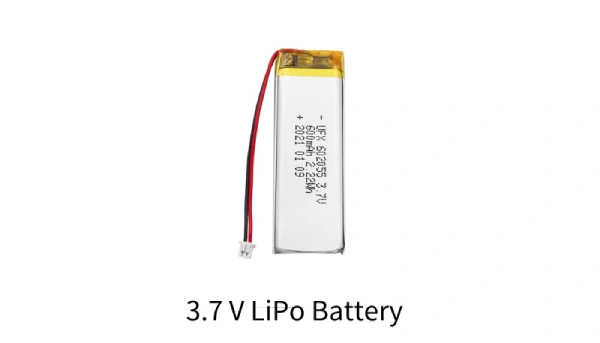
- General: A type of Li-ion battery with a polymer electrolyte.
- Chemistry: Similar to Li-ion, but with a polymer-based electrolyte instead of a liquid one. Anode, commonly graphite or lithium titanate. Cathode typically lithium cobalt oxide or lithium iron phosphate.Polymer electrolyte/separator pouch design.
- Nominal Voltage: 3.7V
- Full Charge Voltage: 4.2V
- Discharge Voltage Range: 3.0V to 3.3V (minimum)
- Energy Density: Very high (150-200 Wh/kg)
- Cycle Life: Typically 300-500 cycles
- Safety: Sensitive to overcharging and puncturing; requires careful handling.
- Applications: Similar to Li-ion batteries, 3.7V LiPo batteries consist of lithium-ion cells. But with a polymer electrolyte encased in a flexible pouch. This design allows for greater packaging flexibility, making LiPo batteries ideal for devices with unconventional shapes or limited space. Their thinness helps minimize device sizes across many hobbies. From remote-controlled toys to medical devices, the 3.7v lipo battery powers various gadgets and equipment.
Advantages: Higher energy density, thinner design, and good discharge rate.
Disadvantages: Can be more prone to swelling and potential safety hazards if mishandled.
Part 4. 3.7V 18650 battery
Another famous incarnation of the 3.7V battery is the 3.7V 18650 battery. Named for its dimensions—18mm in diameter and 65mm in length—the 3.7V 18650 battery packs a punch in a compact cylindrical form factor.
3.7V 18650 battery mass production yields affordable pricing, enabling widespread adoption.
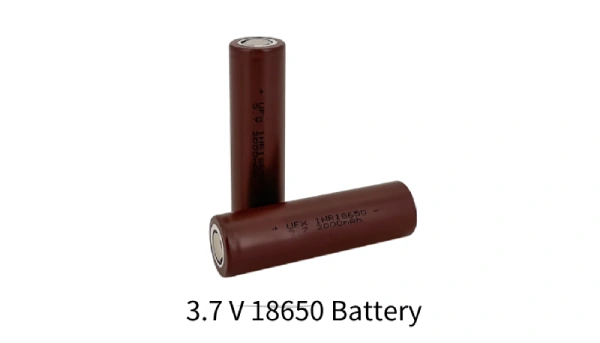
- General: A standard cylindrical Li-ion battery format. Safety vents and casing.
- Chemistry: Graphitic carbon anode. Cathode (typically NMC, NCA). Typically Li-ion, but can also be LiPo.
- Nominal Voltage: 3.7V
- Full Charge Voltage: 4.2V
- Discharge Voltage Range: 2.5V to 3.0V
- Energy Density: High (1800-3500 mAh capacity)
- Cycle Life: Typically 500-1500 cycles
- Safety: Generally safe, but can vent or catch fire if damaged or overcharged.
- Applications: Electric vehicles, power tools, home energy storage – any application needing versatile, highly portable power integrates 18650 packs. Tesla, Dewalt, and Sonnen rely heavily on this format.
Advantages: High energy density, good power output, and standardized format for easy replacement.
Disadvantages: Can be bulky and may require protective circuits to prevent overheating and overcharging.
Part 5. 3.2V LiFePO4 battery
While 3.7V batteries reign supreme, the 3.2V lithium iron phosphate (LiFePO4) battery offers a compelling alternative for specific applications. Known for their inherent safety, long cycle life, and stable voltage output, LiFePO4 batteries find favor in solar energy storage systems, electric bikes, and marine applications where durability and reliability are critical.
While offering lower energy density than Li-ions, the 3.2V LiFePO4 battery provides unprecedented abuse tolerance and longevity suited for industrial/marine applications.
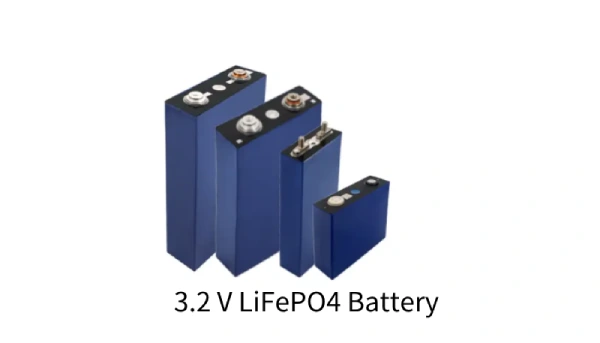
- General: A type of Li-ion battery with a lithium iron phosphate cathode.
- Chemistry: The unique chemistry of 3.2V LiFePO4 batteries comprises a cathode of lithium iron phosphate, an anode of graphite, and a lithium salt electrolyte. This combination results in a robust and stable battery chemistry.
- Nominal Voltage: 3.2V
- Full Charge Voltage: 3.65V
- Discharge Voltage Range: 2.5V to 3.6V
- Energy Density: Lower than Li-ion (90-120 Wh/kg)
- Cycle Life: Typically 2000-5000 cycles
- Safety: Very stable, less prone to overheating and thermal runaway.
- Applications: 3.2v LiFePO4 excels in power tools, solar street lights, off-grid power systems, electric buses, ferries, and stationary grid storage projects demanding maximum safety and cycle life over decades. Renewable integration leans heavily on this chemistry.
Advantages: Excellent safety characteristics, long cycle life (up to 2000 cycles), and good temperature tolerance.
Disadvantages: Lower energy density compared to Li-ion and LiPo, and slower charging rates.
Part 6. Comparing 3.7V Li-ion, 3.7V LiPo, 3.7V 18650 and 3.2V LiFePO4 batteries
| Feature | 3.7V Li-ion | 3.7V LiPo | 3.7V 18650 | 3.2V LiFePO4 |
|---|---|---|---|---|
| Nominal Voltage | 3.7V | 3.7V | 3.7V | 3.2V |
| Full Charge Voltage | 4.2V | 4.2V | 4.2V | 3.6V |
| Discharge Voltage Range | 3.0V – 4.2V | 3.0V – 4.2V | 2.5V – 4.2V | 2.5V – 3.6V |
| Energy Density | High (~200-250 Wh/kg) | Moderate to High (~150-220 Wh/kg) | High (~200-250 Wh/kg) | Lower (~90-120 Wh/kg) |
| Cycle Life | 300 – 1000 cycles | 300 – 800 cycles | 500 – 1500 cycles | 2000 – 5000+ cycles |
| Applications | Smartphones, laptops, cameras | Drones, RC toys, portable electronics | Flashlights, power banks, laptops | Solar storage, EVs, medical devices |
| Safety | Moderate risk of fire/explosion | Higher risk due to soft casing | Moderate risk of fire/explosion | Very safe, stable chemistry |
| Temperature Range | -20°C to 60°C | -10°C to 60°C | -20°C to 60°C | -20°C to 70°C |
| Self-Discharge Rate | ~2-5% per month | ~2-5% per month | ~2-5% per month | ~1-3% per month |
| Weight | Light | Lighter than Li-ion | Heavier due to cylindrical shape | Heavier than Li-ion |
| Charging Method | CC-CV (Constant Current – Constant Voltage) | CC-CV (Constant Current – Constant Voltage) | CC-CV (Constant Current – Constant Voltage) | CC-CV, lower voltage charger required |
In the battle of the batteries, each contender—3.7V Li-ion, 3.7V LiPo, and 3.2V LiFePO4—brings its strengths to the table.
While 3.7V Li-ion batteries excel in energy density and versatility, 3.7V LiPo batteries offer unparalleled flexibility in form factor.
On the other hand, 3.2V LiFePO4 batteries prioritize safety and longevity, making them ideal for demanding applications where reliability is non-negotiable.
Part 7. Summary
In conclusion, the world of 3.7v batteries is vast and diverse, offering solutions to power virtually any device or system imaginable.
Whether you’re powering your smartphone, propelling a drone, or storing solar energy, there’s a 3.7v battery tailored to meet your needs. With advancements in battery technology continually pushing the boundaries of performance and efficiency, the future of 3.7v batteries shines brighter.
Part 8. FAQs
Are 3.7V batteries rechargeable?
Yes, 3.7V batteries are rechargeable, which can be charged and discharged multiple times before needing replacement.
Can I replace a 3.7V battery with a higher voltage battery?
It is not recommended to replace a 3.7V battery with a higher voltage battery, as it may damage the device and pose safety risks. Always use batteries recommended by the manufacturer.
How do I charge a 3.7V battery?
3.7V batteries can be charged using a compatible charger specifically designed for lithium-ion batteries. Follow the manufacturer’s instructions for proper charging procedures.
What is the difference between a 3.7V battery and a 3.6V battery?
While both batteries have similar nominal voltages, a 3.6V battery typically has a slightly lower capacity than a 3.7V battery. However, they are often interchangeable in many devices.
Are 3.7V batteries safe to use?
When handled and used properly, 3.7V batteries are generally safe. However, improper use, overcharging, or physical damage can pose safety hazards such as leakage, fire, or explosion.
How should I store 3.7V batteries when not in use?
Store 3.7V batteries in a cool, dry place away from direct sunlight and extreme temperatures. It is also advisable to store them at a partial charge (around 40-50%) to prolong their lifespan.
What should I do with old or damaged 3.7V batteries?
Dispose of old or damaged 3.7V batteries correctly according to local regulations. Many recycling centers accept lithium-ion batteries for safe disposal and recycling to minimize environmental impact.
Related Tags:
More Articles
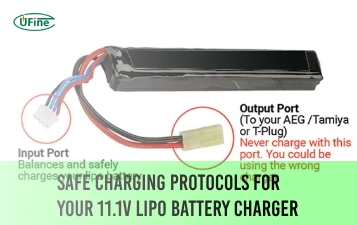
Safe Charging Protocols for Your 11.1V LiPo Battery Charger
Safely charge your 11.1V LiPo battery by following proper rates, using safety tools, and avoiding common charging mistakes.
11.1 V LiPo Battery Airsoft: Boosting Field Performance
Upgrade your airsoft gun with an 11.1V LiPo battery for faster firing, longer runtime, and top-tier performance on the battlefield.
Batteries for Trolling Motors Lightweight vs. Leaf Blower Power
Explore the best lightweight trolling motor batteries and how they compare to leaf blower power for performance, portability, and runtime.
What Is a 2C Battery?
Learn what a 2C battery is, how C-rates affect performance, and how to calculate the number of batteries your device needs.
What Battery Does LED Strips Use?
Discover which batteries power LED strips best. Learn about voltage, capacity, battery types, and how to safely power your LED lighting projects.



